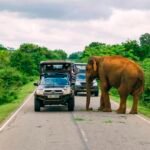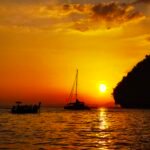Introduction to Zhangjiajie
What we commonly know as “Zhangjiajie” is actually just a general term. The scenic area is officially called the “Wulingyuan Scenic Area.” Located in the northwest of Hunan Province, it consists of Zhangjiajie National Forest Park, the Suoxiyu Nature Reserve in Cili County, and the Tianzi Mountain Nature Reserve in Sangzhi County, along with the newly discovered Yangjiajie Scenic Area, covering a total area of 500 square kilometers.
The Wulingyuan Scenic Area includes five main parts: Zhangjiajie, Yuanjiajie, Yangjiajie, Tianzi Mountain, and Suoxiyu. For the convenience of visitors, the entire area operates on a single ticket system, allowing free entry and exit within 48 hours.
Legend has it that during the Han Dynasty, the minister Zhang Liang, mindful of the historical lesson “When the birds are gone, the bow is put away,” followed the example of Fan Li from the Spring and Autumn period, retreating into seclusion after achieving success. He came to Dayong, where he established the Zhang family line, leading to the name “Zhangjiajie.”
According to locals, Zhangjiajie experiences foggy weather for over 200 days a year, with a lower chance of fog from May to October.

The “Hallelujah Mountains,” featured in the world’s first 3D movie Avatar, are represented by the Qiankun Pillar in Zhangjiajie National Forest Park. Here, you can explore the mysterious and enchanting world of floating mountains and starry landscapes from Avatar.
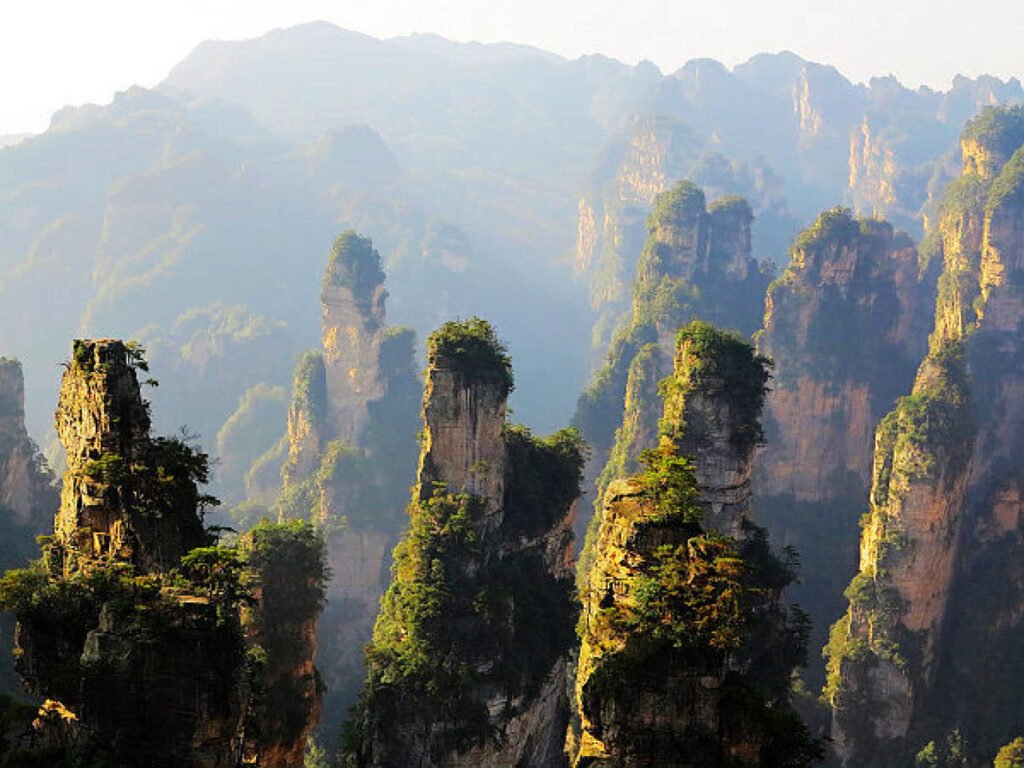
Wulingyuan Scenic Area
The Wulingyuan Scenic Area includes three major attractions: Zhangjiajie National Forest Park, Suoxiyu (part of it), and Tianzi Mountain Scenic Area. Zhangjiajie National Forest Park features highlights like Huangshizhai, Shadogou, Jinjian Creek, Yaozizhai, Yuanjiajie Scenic Area, and Yangjiajie Scenic Area (with Tianbofu belonging to Yangjiajie), while the Ten-Mile Gallery is located in the Suoxiyu Scenic Area, and Laowuchang is part of Tianzi Mountain Scenic Area.
To fully explore the area, you’ll need about 6 to 7 days to visit all the classic sites, although three days is often the minimum for a decent visit. The main scenic area has many intersections, and some of the beautiful spots can be quite remote. Visitors often struggle to accurately estimate travel times between attractions, leading to detours and unnecessary backtracking—common pitfalls for independent travelers. Therefore, if you’re unsure about self-guided touring, it’s advisable to hire a reputable guide who can plan the itinerary and provide insights along the way, helping you understand the stories behind each remarkable mountain in Zhangjiajie.
Ticket Information
Tickets for Zhangjiajie National Forest Park are valid for Tianzi Mountain and Suoxiyu, but do not include the costs for cable cars, the sky ladder, or the little train within the scenic area.
Ticket prices are as follows: 245 yuan plus a 3 yuan insurance fee (valid for multiple entries within four days, including the environmental shuttle bus fare); a weekly ticket costs 298 yuan (valid for multiple entries within one week). If visitors with the “three days, one ticket” pass wish to extend their stay, they will need to purchase additional days.
There are five ticket stations in the area: Wulingyuan Ticket Station, Forest Park Ticket Station, Shuiraosi Ticket Station, Yangjiajie Ticket Station, and Tianzi Mountain Ticket Station. Most visitors typically enter through the Wulingyuan Ticket Station and the Forest Park Ticket Station. Additionally, when purchasing tickets, visitors can buy insurance at a designated window.
The World’s No. 1 Bridge at Yuanjiajie
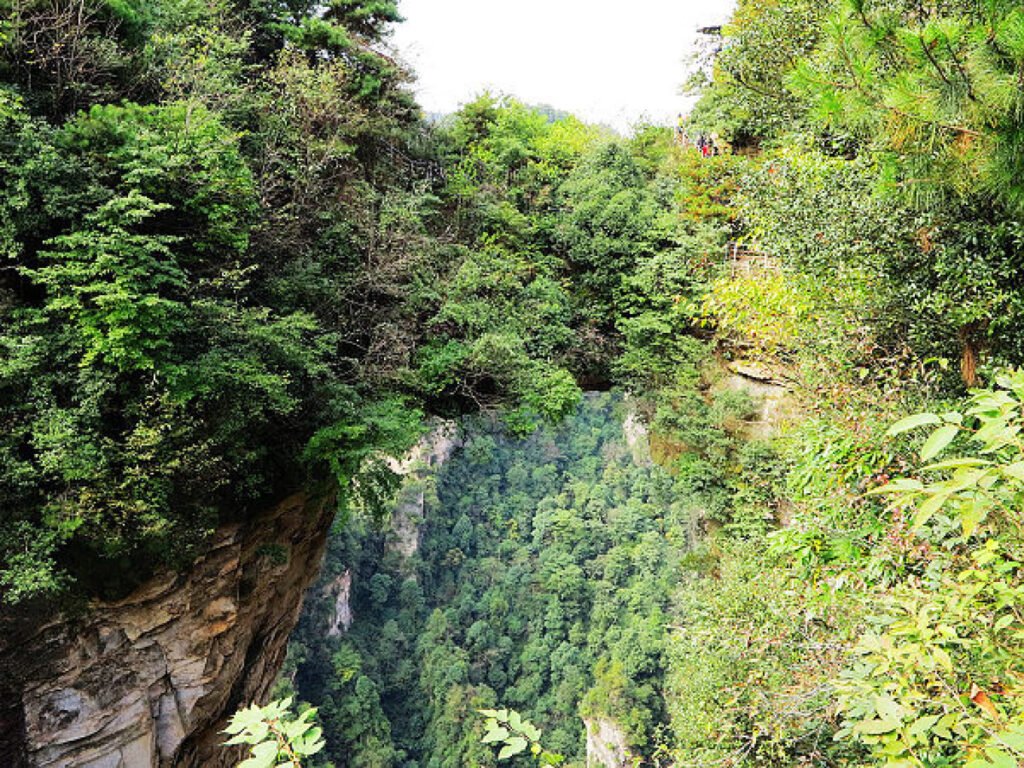
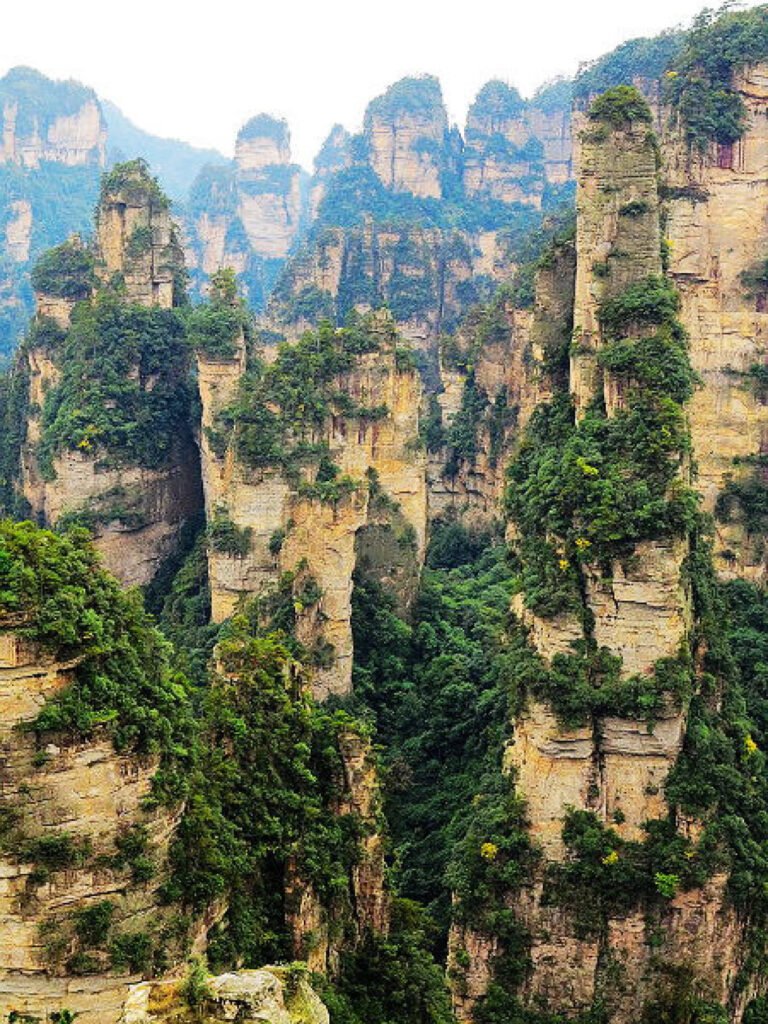

Yangjiajie
Located in the northwest of Wulingyuan, Yangjiajie is bordered to the north by Tianzi Mountain. It features three sightseeing areas: Xiangzhi Stream, Longquan Gorge, and Hundred Monkeys Valley. Xiangzhi Stream lies in the eastern part of the Yangjiajie Scenic Area, where a winding stream flows between towering peaks on either side. Longquan Gorge is filled with majestic stone peaks, clear waters, and tranquil pools with cascading waterfalls, creating a picturesque scene. Hundred Monkeys Valley is home to macaques and egrets, with troops of monkeys roaming the cliffs and groups of egrets nesting among the verdant branches.
Exploring Yangjiajie offers a unique experience with its gradual ascent through well-known spots like Wulongzhai and Tianbofu, intertwining the natural beauty with the historical tales of banditry and legends of the anti-bandit campaigns. This journey will deepen your understanding of the customs and culture of western Hunan amid the captivating landscapes. Additionally, there are over 200 scenic spots, including Bupeng Tian and the Sky Corridor.
Recommended Attractions: Tianbofu, Wulongzhai, Bupeng Tian, Sky Corridor
- Wulongzhai: This is the most thrilling destination in the Yangjiajie Scenic Area, a former bandit stronghold from the old days. To enter, visitors must pass through four “ghost gates,” overcoming various challenges before reaching the observation deck at Wulongzhai. Though the journey is arduous, it offers an exhilarating experience that stands out within Zhangjiajie.
- Tianbofu: Located below Wulongzhai, Tianbofu features ten stone walls that stand parallel to each other, varying in height and grandeur, resembling the ruins of an ancient general’s residence. It feels as if this was once the great estate of the Yang family. After crossing a swaying suspension bridge and climbing to the top of Tianbofu, you’ll be rewarded with breathtaking views.
- Bupeng Tian: This is the highest peak in the area, standing at an elevation of 1,130 meters. Visitors can climb to the summit using 32 iron steps. The summit is flat and surrounded by iron railings. The nearby southwestern peaks are lush with trees, and looking west toward Zhonghu Lake reveals a multi-layered view. The first layer consists of two low, rectangular stone pillars, while the second layer has three stone peaks, one resembling a person cradling a child, another resembling a pair of lovers embracing, and the last resembling a large barrier. To the south, a stone peak tapers from large at the bottom to small at the top, resembling a mallet.
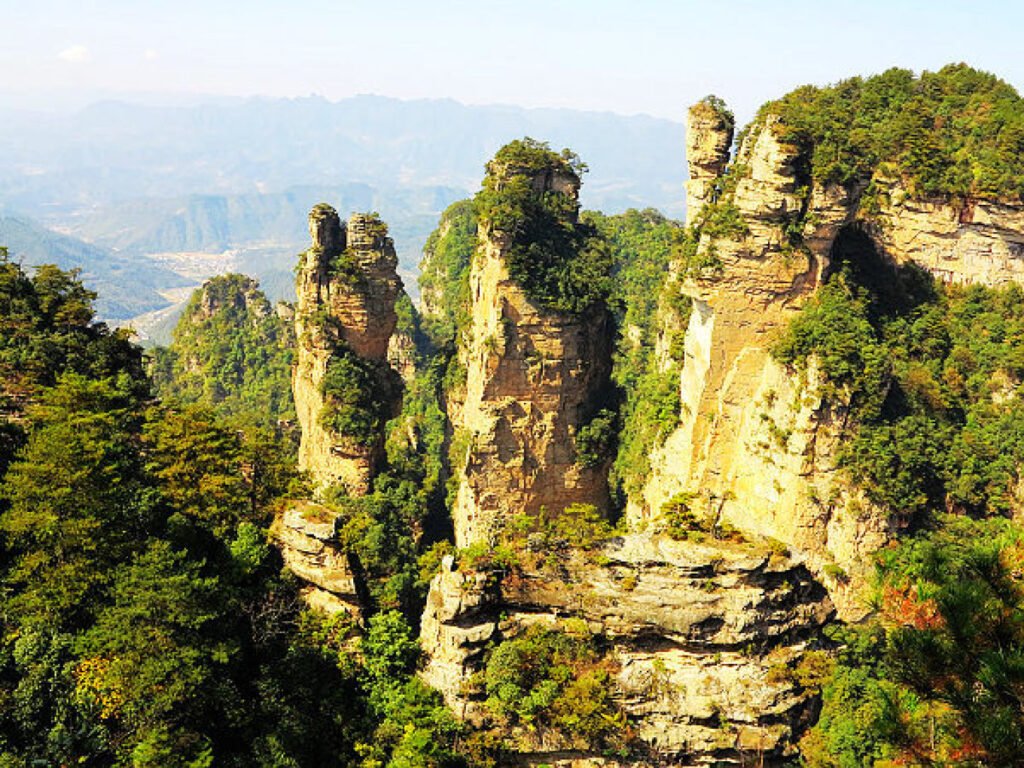


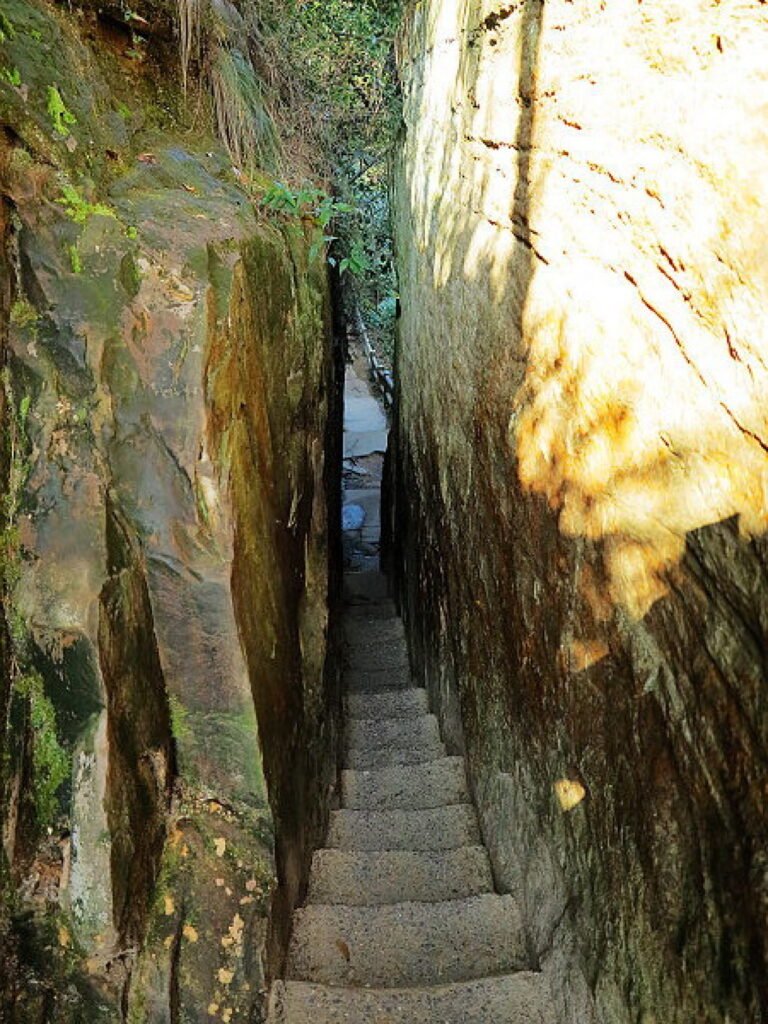
Tianmen Mountain Scenic Area
Tianmen Mountain is located just 8 kilometers from the center of Zhangjiajie and stands at an elevation of 1,518.6 meters. Originally named Songliang Mountain, it is the highest mountain in the Yongding District of Zhangjiajie and one of the earliest famous mountains to be recorded in history, having been designated as a national forest park in July 1992.
Tianmen Mountain is home to what is said to be the longest mountain cableway in the world. Among similar cableways, it ranks first in Asia and second worldwide. The cableway stretches a remarkable 7,455 meters at an incline, with a vertical difference of 1,279 meters between the upper and lower stations. It features the world’s longest single-line, detachable gondola system, with each cabin accommodating eight passengers. The ride to the upper station takes about 30 minutes. Accessing Tianmen Mountain National Forest Park requires taking the cableway. The cableway has three stations: lower, middle, and upper, allowing for direct travel from the lower station to the upper station. The starting point of the cableway is conveniently located near the train and bus stations.

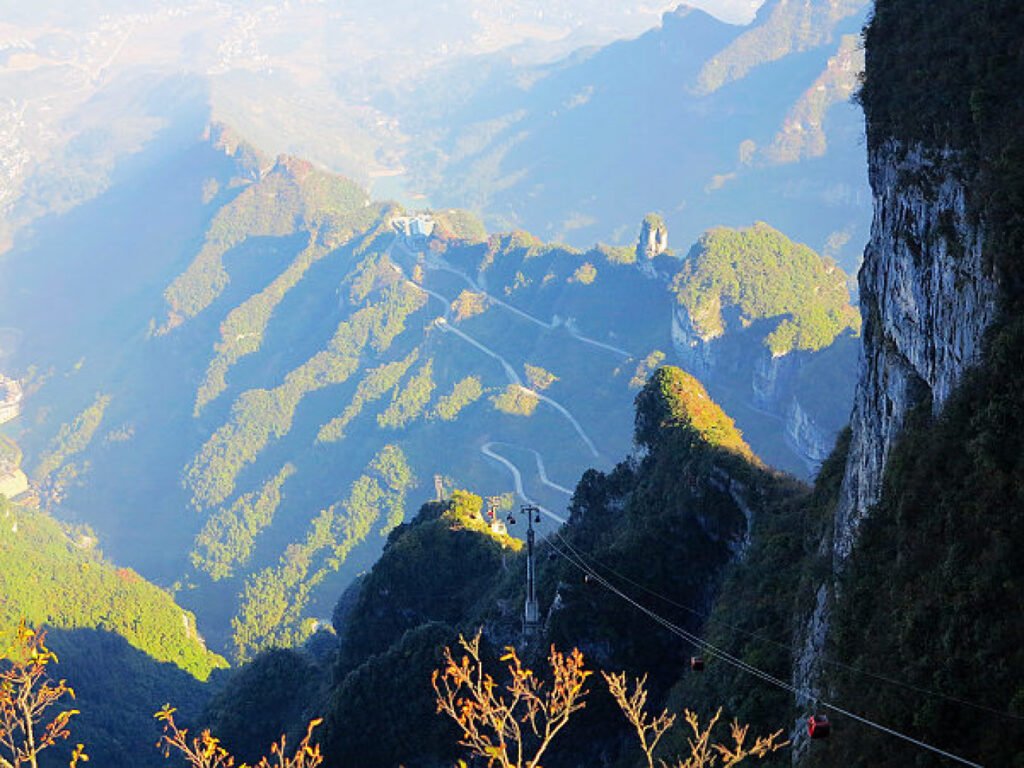

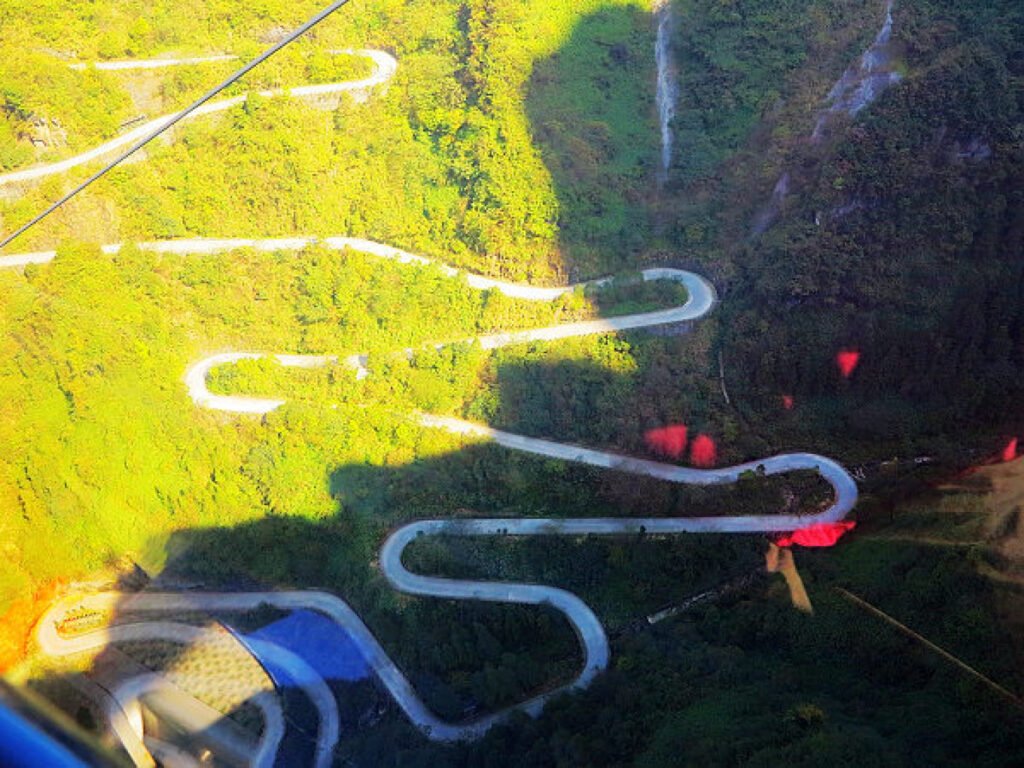

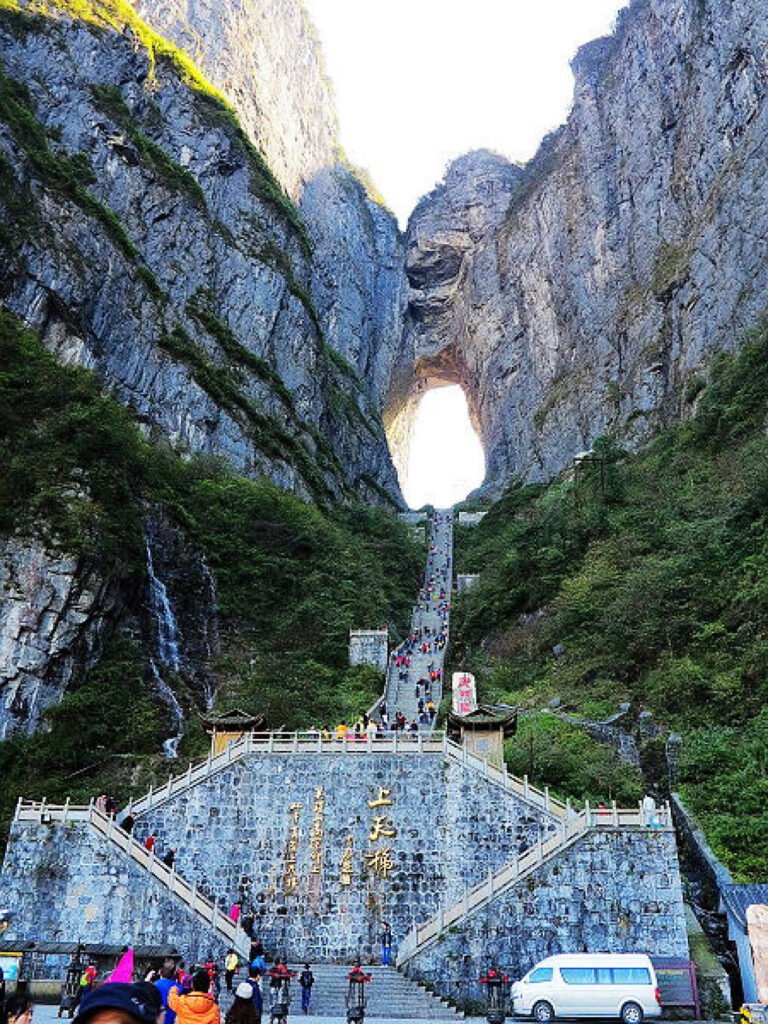
Tianmen Mountain is a popular destination for wingsuit flying, attracting many top international wingsuit pilots who come to take on the challenge. Since 2012, the Tianmen Mountain Wingsuit Flying World Championship has been held here, making it a holy site for wingsuit enthusiasts worldwide. The events include the big loop race and precision target flying, where athletes showcase their exceptional flying skills and precise control in complex terrain and airflow conditions.
The allure of wingsuit flying at Tianmen Mountain lies in its combination of speed and technique. Pilots must perform a variety of intricate aerial maneuvers while flying at high speeds, all while ensuring a safe landing. This sport not only tests the athletes’ physical fitness and mental strength but also requires extensive experience and exceptional skills. The unique geographical and climatic conditions of Tianmen Mountain add further challenges and visual appeal to wingsuit flying, making it a shining gem in the world of extreme sports.
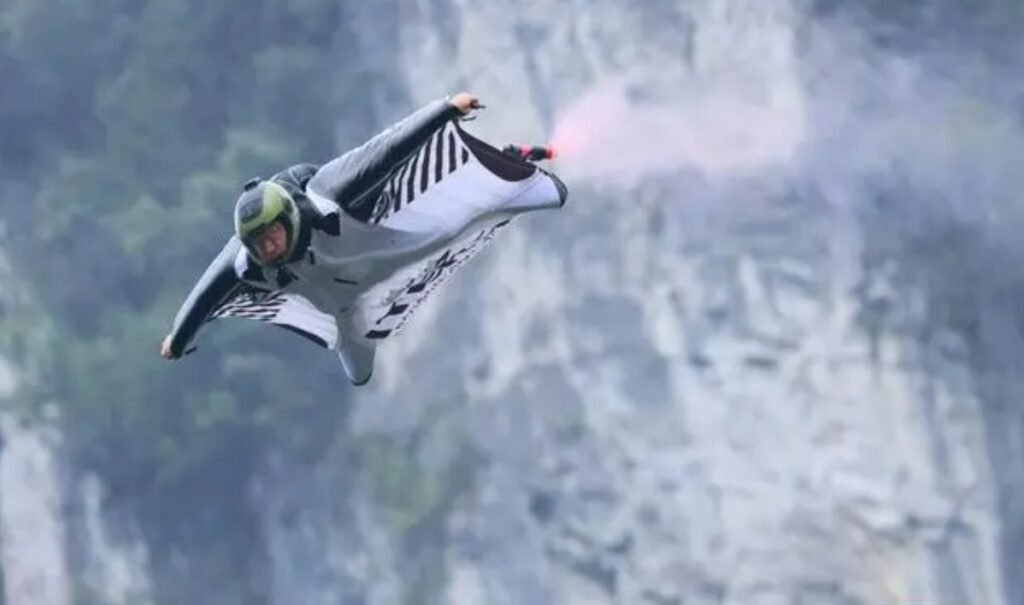

Accommodation Guide:
In Zhangjiajie, hotels and guesthouses of various sizes are mainly distributed across three areas: Suoxiyu, the city center, and the National Forest Park. The majority of accommodations can be found in the city center and Suoxiyu, with fewer options in the forest park. Additionally, if you want to fully experience the picturesque “landscape painting” of Zhangjiajie, the local farm stays within the scenic area are also worth considering.
Be cautious about relying on tour guides’ recommendations. So-called three-star or four-star hotels in Zhangjiajie that are offered at very low prices are often self-rated by local owners. These accommodations typically meet only the standards of ordinary inns, and the environment and cleanliness may not be up to par.
Food Recommendations:
The cuisine of the Tujia people in Zhangjiajie is rich in ethnic characteristics while also incorporating the essence of Hunan cuisine. Spiciness is a hallmark of Hunan dishes, and Tujia food is no exception. In addition to the heat, the Tujia people have a special fondness for pickled and fermented foods, which offer a unique flavor profile.
Zhangjiajie offers a wide variety of snacks, including kudzu root powder, kiwi juice, Tujia-style fried rice, sesame candy, fried rice balls, oil cakes, rice dishes, and pig’s blood porridge, among others. At night, the city streets come alive with food stalls, and you can enjoy a great meal for about 100 yuan for four people. The popular night markets include the Nanzhuangping Market and Dongmenqiao, bustling with activity. Just find a spot where there are plenty of people, and you can’t go wrong!
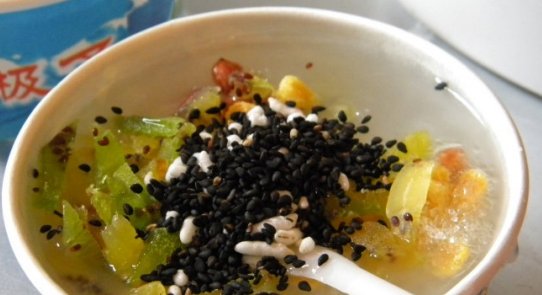
Kudzu Root Powder: One of Zhangjiajie’s three treasures, kudzu root powder comes in two varieties: rice kudzu powder and wild kudzu powder. Traditionally, the wild kudzu powder found at elevations above 720 meters is considered the most authentic, as Zhangjiajie has an altitude of over 1,200 meters. Kudzu root powder is renowned for its beauty benefits, such as enhancing skin health and slowing the aging process, earning it the reputation of being a beauty-enhancing supplement.
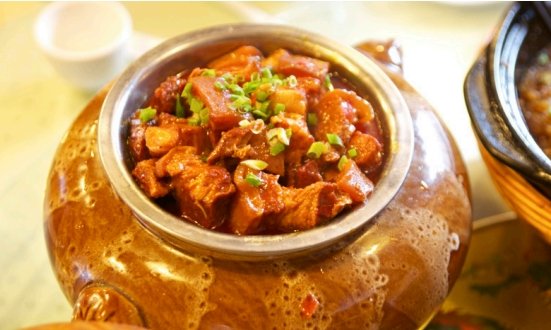
Lekoufu Homestyle Restaurant :
Lekoufu has two locations in Zhangjiajie. The one in Dayong Fucheng is easy to find and has a clean environment. Specializing in Hunan cuisine, the restaurant is known for dishes like chopped pepper fish head, stewed local chicken with rock ear fungus, crispy rice with pork, and cucumber salad. The flavors are great, and the portions are generous.
Address: Guyong Road, Yongding District, Zhangjiajie (near the City People’s Hospital).
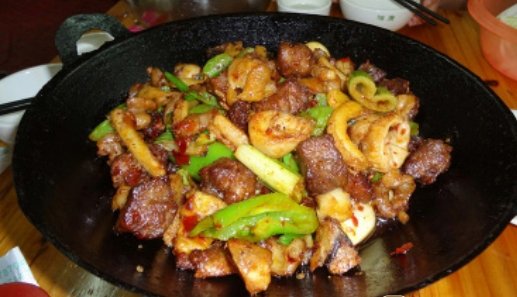
Master Hu’s Three Down Pot:
This popular and long-established restaurant caters to a variety of tastes. The signature dishes include stir-fried sausages and stir-fried walnut meat, which can be simmered together for a delicious flavor. It’s a good idea to order a side of pickled radishes; their crispiness and tanginess complement the main dishes perfectly. If you can’t handle spicy food, be sure to inform them in advance and request mild or no spice. However, the restaurant’s environment and service are average.
Address: Sanjiao Ping, Yongding District.
Recommended Itinerary:
For Zhangjiajie, I recommend taking a bus up to Tianzi Mountain and then exploring the area from the top down. This approach saves both energy and money—it’s a win-win! You can stay at Tianzi Mountain and spend your first day visiting Wulongzhai, Daguantai, and Tianzi Mountain, then descend to the Ten-Mile Gallery. On the second day, you can explore Yuanjiajie, and descend from Luancuampo to Jinbian Stream. If you have time, visiting Huanglong Cave on the third day is also a great option.
I highly suggest hiking the Ten-Mile Gallery and Luancuampo; taking the sightseeing train or cableway won’t let you fully experience the fun and beauty of these areas.
Best Travel Time:
The best seasons to visit Zhangjiajie are spring and autumn. In spring, Zhangjiajie is a breathtaking sight with flowers in full bloom. You can explore Jinbian Stream, wander through the Ten-Mile Gallery, and visit Huanglong Cave, experiencing the joy of entering a paradise like the legendary Peach Blossom Spring. In autumn, the sky is high and the clouds are light, with forests painted in vibrant colors. This is also the season for delicious fruits like kiwi and honey tangerines to ripen.
In contrast, summer brings high temperatures and frequent rain, while winter can be quite cold, making them less comfortable compared to spring and autumn. For spring, I recommend visiting Jinbian Stream, the Ten-Mile Gallery, Huanglong Cave, and Baofeng Lake. In autumn, don’t miss Tianzi Mountain, Yuanjiajie, Xihai, and Fengqishan.
Clothing Index:
Zhangjiajie experiences significant temperature differences between day and night, but the seasonal temperature variations are relatively small. The temperature difference between the core scenic area and the city is about 5-10°C. The hottest it gets in the city is around 39°C, while the scenic area is about 30°C.
In the summer, be sure to bring sunscreen, and you might need a light blanket at night. If you’re staying at the mountaintop, it’s best to bring long-sleeved clothing. For autumn and winter visits, layering with jackets or suits along with thin wool sweaters is recommended. Older individuals or those with weaker health should wear a jacket or windbreaker with a wool sweater.
Make sure to wear good non-slip shoes, as Zhangjiajie can be quite rainy. It’s also a good idea to bring an umbrella or waterproof clothing.

